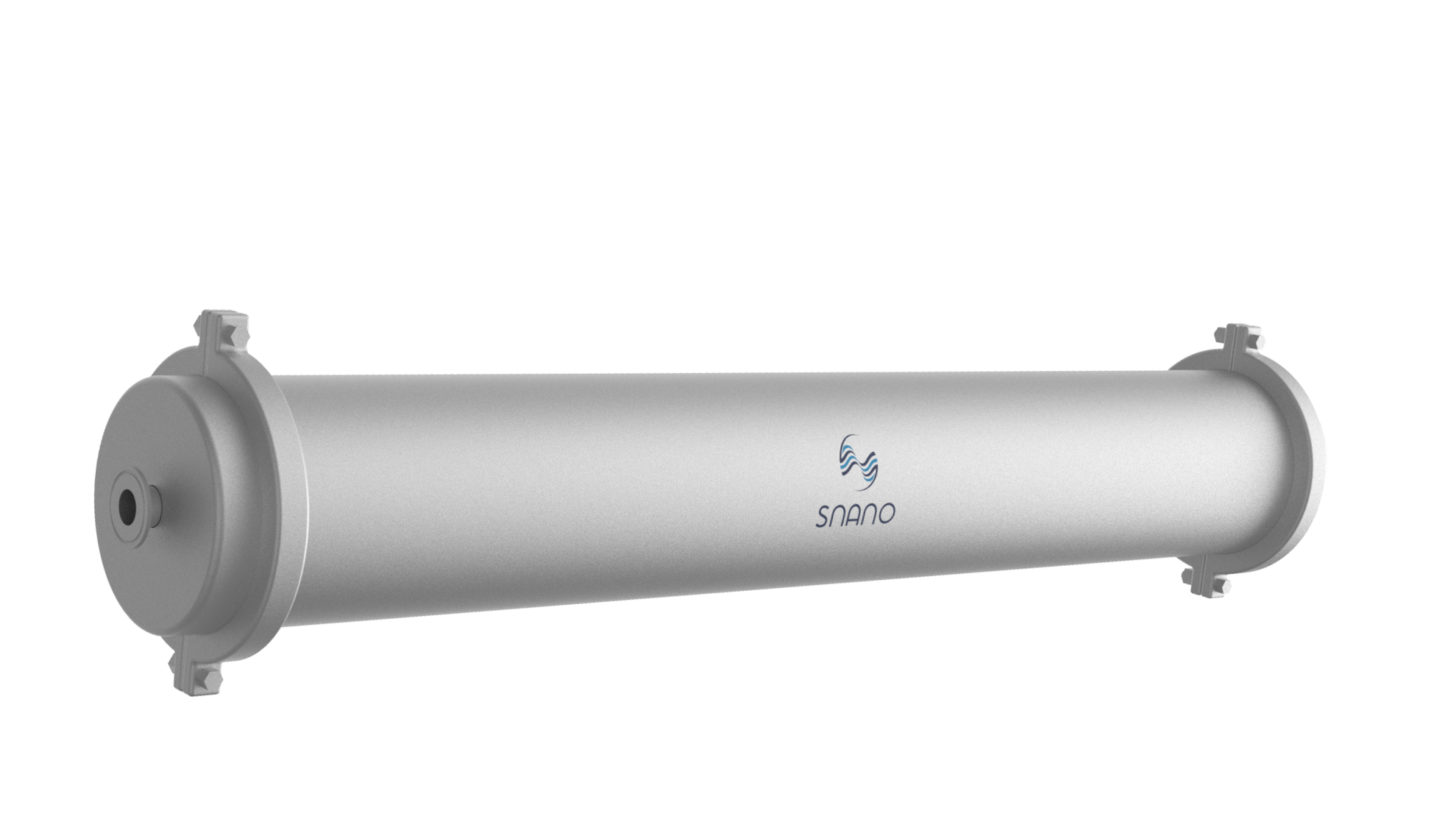
A breakthrough membrane technology solution
What makes us different?
“Snano’s revolution is not about excelling in just one aspect - it’s about advancing to a higher level across every key dimension.”
-
Addresses the insufficient selectivity of pure ceramic membranes and the poor chemical resistance of polymeric membranes.
-
Combines the chemical stability of ceramic substrates with the antifouling properties of the membrane layer, enabling broad application scenarios.
-
Zero microplastic release, no PFAS contamination risk, compliant with premium drinking water standards.
-
Single membrane module replaces conventional dual-membrane processes, integrated "membrane-pump" design reduces costs by 30%.
The benchmark for next-generation membrane technology
Snano's core technology—ceramic-based composite nanofiltration membranes—represents a revolutionary separation material. This technology employs low-cost ceramic membranes from the "New Ceramic Future" platform as substrates, upon which chemically resistant nanofiltration (NF) functional selective layers are constructed.
Laboratory investigations have comprehensively validated the feasibility of this technological approach. Through innovative interfacial polymerisation (IP) methodology, the research team has successfully fabricated nanofiltration membranes exhibiting stable performance and exceptional resistance to concentrated acids and alkalis on tubular ceramic substrates. The membrane selective layer demonstrates robust adhesion to the ceramic matrix whilst exhibiting outstanding nanofiltration separation characteristics.
For instance, ceramic-based nanofiltration membranes incorporating positively charged selective layers exhibit high water permeability (>20 LMH/bar), superior divalent cation rejection (>90%), and minimal phosphorus retention (~12%). These membranes demonstrate excellent acid-base stability, enabling efficient discrimination between metal ions and phosphorus under acidic conditions.
Conversely, ceramic-based nanofiltration membranes featuring negatively charged selective layers achieve water permeability exceeding 10 LMH/bar, with high rejection rates for both divalent anions and cations (92-98%) whilst maintaining exceptionally low monovalent ion rejection (<12%). This configuration facilitates efficient phosphorus separation and selective monovalent/divalent ion fractionation.
Micro-negatively charged (or near-neutral) ceramic-based composite nanofiltration membranes
How it works: The membrane acts like a super-fine sieve - it blocks the big stuff (organic matter and particles) with over 99% efficiency, while letting the small beneficial minerals pass right through (over 90% get through).
Why it's great: This technology cleans your water by filtering out all the nasty contaminants like dirt, germs, and bacteria, but keeps the good minerals your body needs. It's like having a bouncer that only lets the right things into your water.
Ceramic-based composite membrane (cross section)
Our product - Membrane Module
A ceramic-based composite membrane(CBcM) is fabricated using ceramic membranes as the substrate through specialized coating processes. It exhibits high water flux, excellent ion selectivity, and superior durability. This membrane technology enables water treatment systems to achieve efficient water recovery and contaminant reduction, serving as an ideal solution for industrial zero liquid discharge (ZLD) and resource recirculation applications.
Stainless steel (SUS304/316) housing
CCM-cNF60
Stainless steel (SUS304/316) housing
CCM-cNF9040
FRP housing
CCM-cNF60
UPVC housing
CCM-cNF9040
Our membrane modules are designed with industrial versatility in mind. We offer flexible installation configurations - vertical or horizontal mounting, single or multiple units in series - to accommodate water treatment systems of any scale or specification. The membrane housings come in multiple material options including stainless steel grades (SUS304/316L) and uPVC, allowing selection based on specific corrosion environments and operational requirements. This ensures reliable, safe performance even under demanding industrial conditions.
Our Test Instrument
A versatile experimental unit for water treatment research—showcasing membrane operation, cleaning, and chemical washing in one integrated system.
FAQs
Q: How does SNANO's ceramic-based composite nanofiltration membrane differ from others?
A: SNANO's ceramic-based composite NF membrane combines the best of both worlds - the chemical and mechanical stability of ceramic substrates with the high precision of polymeric nanofiltration layers. Unlike traditional polymeric substrate membranes that degrade over time, or pure ceramic membranes that lack nanofiltration precision,our composite technology delivers both high accuracy (200Da-300,000Da molecular weight cutoff) and exceptional durability.
Q: What makes SNANO membranes more cost-effective?
A: Our technology reduces both capital and operating costs:
• Simplified process: Single-membrane system vs. traditional dual-membrane (UF+NF) processes
• Lower energy consumption: Reduced cleaning frequency and flushing capability
• Integrated design: "Membrane pump integration" reduces investment costs by 30%+ and equipment volume by 50%
• Fast delivery: Standardized design enables rapid manufacturing and deployment
• Easy after-sales service: Standardized components simplify maintenance, reduce downtime, and lower service costs
Q: What applications are SNANO membranes designed for?
A: Our membranes excel in demanding applications:
High-quality drinking water
Industrial wastewater treatment and resource recovery
Precision separation in pharmaceutical and electronics industries
Any scenario requiring both high precision and harsh chemical resistance
Q: Are SNANO membranes environmentally safe?
A: Yes, our membranes address key environmental concerns:
Zero microplastic contamination risk
No PFAS (forever chemicals) safety hazards
Low carbon footprint






